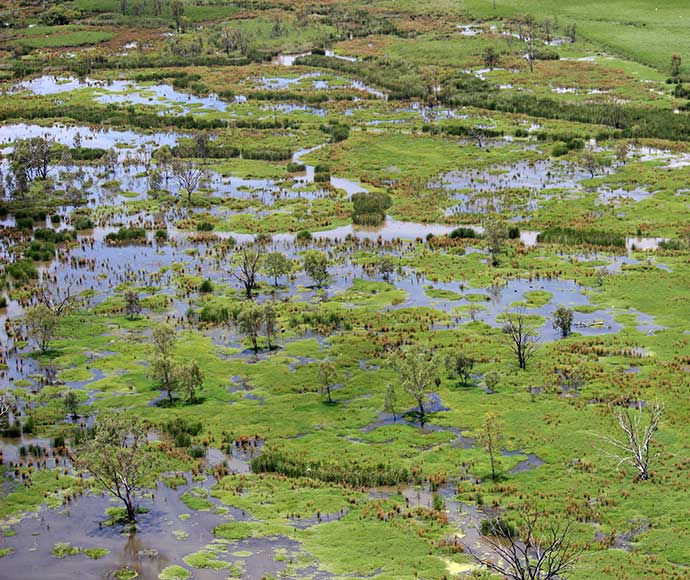The Macquarie Cudgegong Environmental Water Advisory Group (EWAG) met in Dubbo to discuss recent environmental water use and review outcomes against objectives for the current water year. Details are:
- approximately 180,000 megalitres (ML) of water for the environment has been used in the Macquarie
- approximately 9,000 ML of water for the environment has been used in the Cudgegong
- in both the Macquarie and Cudgegong systems, carryover has been secured for future use (approximately 250,000 ML and 15,000 ML, respectively).
Catchment conditions
Conditions across the catchment are generally dry, with low inflows into Burrendong Dam over the last 12 months. Local rainfall has been variable. Most of the Macquarie floodplain remains dry, with exceptions like Warren, which experienced localised storms.
The Macquarie Marshes has dried back from its peak of 28,000 hectares in early September 2023 to around 10,000 hectares in February 2024. This includes the core reedbed areas, inner river red gum forests and main streams. Connectivity to the Barwon ceased from January to February 2024.
The Bureau of Meteorology's 3-month outlook (April to June 2024) forecasts above-average temperatures and neutral rainfall compared with the average. While long-term weather forecasts suggest El Nino conditions are easing, there remains a high level of uncertainty about longer-term conditions.
At the time of the meeting, Burrendong Dam was at 58.8% capacity, while Windamere Dam was at 92%.
Fish and flow outcomes
The group heard about actions taken to meet previously agreed environmental water objectives for 2023–24. These included:
- A spring pulse in the Cudgegong River followed by elevated base flows to boost productivity, native fish breeding and recruitment success. Flows targeted in-stream nesting species like eel-tailed catfish, northern river blackfish and Murray cod.
- A spring pulse in the Macquarie River followed by a period of stable flows at Baroona near Dubbo to support nesting of species in that reach. These include Murray cod, eel-tailed catfish, and a range of other smaller aquatic animals like yabbies, shrimp, and small-bodied native fish, which form important parts of the river food web.
- 'Flow smoothing' efforts over summer 2023–24, to improve flow conditions for eel-tailed catfish and ease pressure on riverbanks by easing the rates of rise and fall during river operations.
Supporting native fish recruitment over autumn 2024
Supporting native fish requires more than a single flow event. An autumn flow pulse will be provided for the Macquarie River to allow young fish to disperse within the river, improving their chances of reaching adulthood.
Unless supplied by other water sources, this 10,000 ML event will be ordered in April 2024.
Looking ahead
The group discussed the current and forecast conditions that will set the context for water use decisions. The Environmental Water Advisory Group also reviewed the broad objectives set previously for both the Macquarie and Cudgegong.
This identified a shift in the water use strategy from drought recovery in 2020-24 to system maintenance and, where possible, improvement. Native fish and waterbirds that nest in large groups remain in a population recovery period.
The Environmental Water Advisory Group will meet again in May 2024. It is anticipated more certainty around climate outlook and catchment conditions will be available at this time, allowing the Environmental Water Advisory Group to identify specific water use objectives and inform a detailed watering plan.


